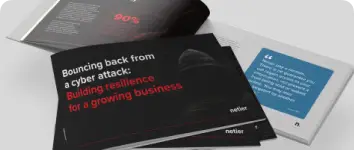
There is often a misalignment between what a business wants, and what IT provides, or thinks that the business wants. Sometimes the IT department gets lost in speeds and feeds and playing with new technology, rather than focusing on the business outcomes.
Expectations are mounting on IT not to be a cost centre, but a profit centre. These expectations can be broadly summarised along three facets:
- Improve Operational efficiency
- Reduce Business Risk
- Flexibility and Agility to support ever changing business needs
If these are not achieved or factored in, then a business can quickly become irrelevant to its customers, and in turn, the outcomes can be catastrophic.
Increased Efficiency:
IT Departments are under constant pressure to increase efficiency. Improving efficiency usually means changing the operational model within IT. This can be in the guise of minor tweaks, be it standardisation, quicker response times, self service for users, to major projects, such as implementing HCI, outsourcing to a MSP, or looking at moving applications to a cloud environment.
Optimising Time:
Businesses want IT to spend time more optimally. Traditional IT Operating models are now obsolete. Historically, IT would spend a large amount of time evaluating, integrating processes and having a very weak ROI or extended ROI / TCO on the investments made. Contemporary businesses that are effective are faster and leaner than ever before.
Skill and Workforce Matching:
Gone are the days of having specific resources for specific tasks in an IT Team. This is seen as an inefficiency. Successful contemporary organisations have moved away form supporting a legacy infrastructure model and have stopped creating resource islands. What is a resource island I hear you say? It is when you bring a unique resource into an organisation and then need to have specific staff to manage it. As the resource grows, the more staff you need to manage it and keep up with the workload. This is the definition of creating a resource island.
Resource Management:
All physical resources need to be managed. The more you add to your infrastructure, the more power, space and cooling you shall require. This shall increase the tacit costs of your investment as well as put a drain on resources (money) which could be utilised in a more efficient way within the organisation.
Adhering to Budgets:
The number one complaint from businesses is that IT do not adhere to budgets, or consistently go back to the business to increase the budget required. This is usually to do with the lack of scoping a project or upgrade and under utilising the resources that you currently have in place. If you are not using the current equipment that you have, then you are not maximising your opportunity costs and potentially missing out on investing in projects or efficiency gains.
You can make your IT budget more efficient and serve the business better by rethinking the way you provide services. One great framework to use is to focus on overall scale of all your resources as your standard operating procedure, rather than focusing on individual resources.
Reducing Risk:
Risk mitigation or reduction of risk is one of the hot topics currently. There is a massive appetite within the IT sector to reduce risk and there is a need to lower risk. Applications and systems need to remain highly available, and the data must be secure. If not, then governance issues come into play. The following three components are the pillars of reducing risk:
- Procurement: Making sure you purchase what is fit for purpose and how it could potentially impact your operations when integrated.
- Operations: Redundancy is key, but you need to do a cost benefit analysis as redundancy that is bullet proof may not be acceptable to the business.
- Data Protection: The main thing to remember is that data protection isn’t about back-up. Its about data recovery.
Agility:
The speed of getting a new product or service is the potential difference between success and failure for an organisation. Businesses count on IT for a competitive edge. Failure or slow reaction is paramount to the death of a business. Furthermore, if a business sees IT as not being agile, then the advent of shadow IT occurs within an organisation (When Lines of Business or individuals start taking IT matters into their own hands without understanding impacts that their decisions can make to the whole organisation). Agility and Speed are two fundamentals that all IT resources need to adopt to make sure that the business has success.
Wrapping it all up…
With the disconnect that can be seen in many businesses and their IT, it is important to understand the place of IT within the business and the fact that now IT is seen as a business critical function in all aspects of Go To Market strategy (GTM). As such, there is a need to be able to support the business and their needs and outcomes. Being cognisant of the above shall drive the greater business and IT closer and allow the organisation to have the competitive advantage.
What next?
Do you need some help in realigning your IT and greater business? At Netier, we help bring organisations and not-for-profits together to realise their competitive advantage. Visit our Managed IT Services page for more information. Speak to us about your next steps and let us partner with you on your journey.
Call Us
For more information, call us on 1300 638 437 and one of the team will be happy to assist.
Email Us
Email [email protected] and one of the team will get back to you as soon as possible.




